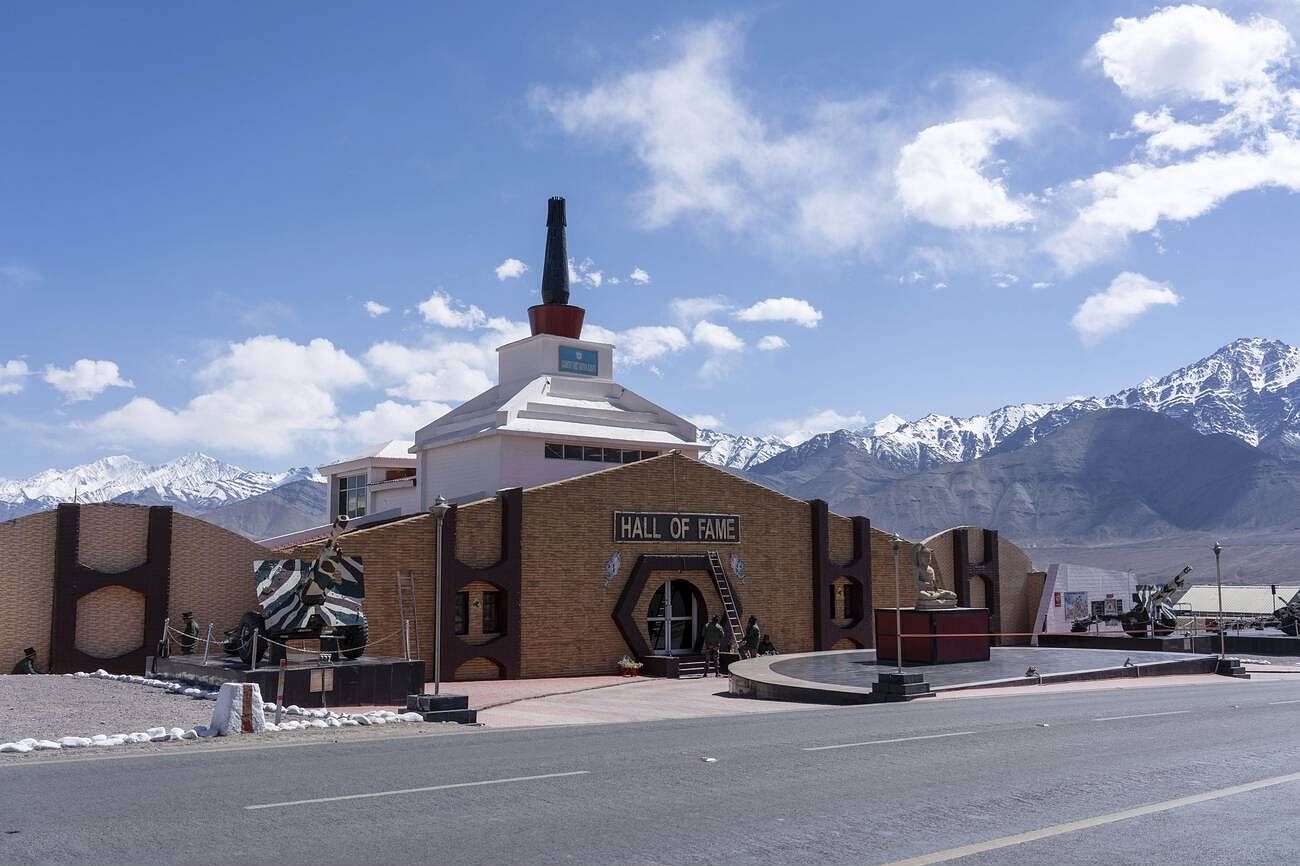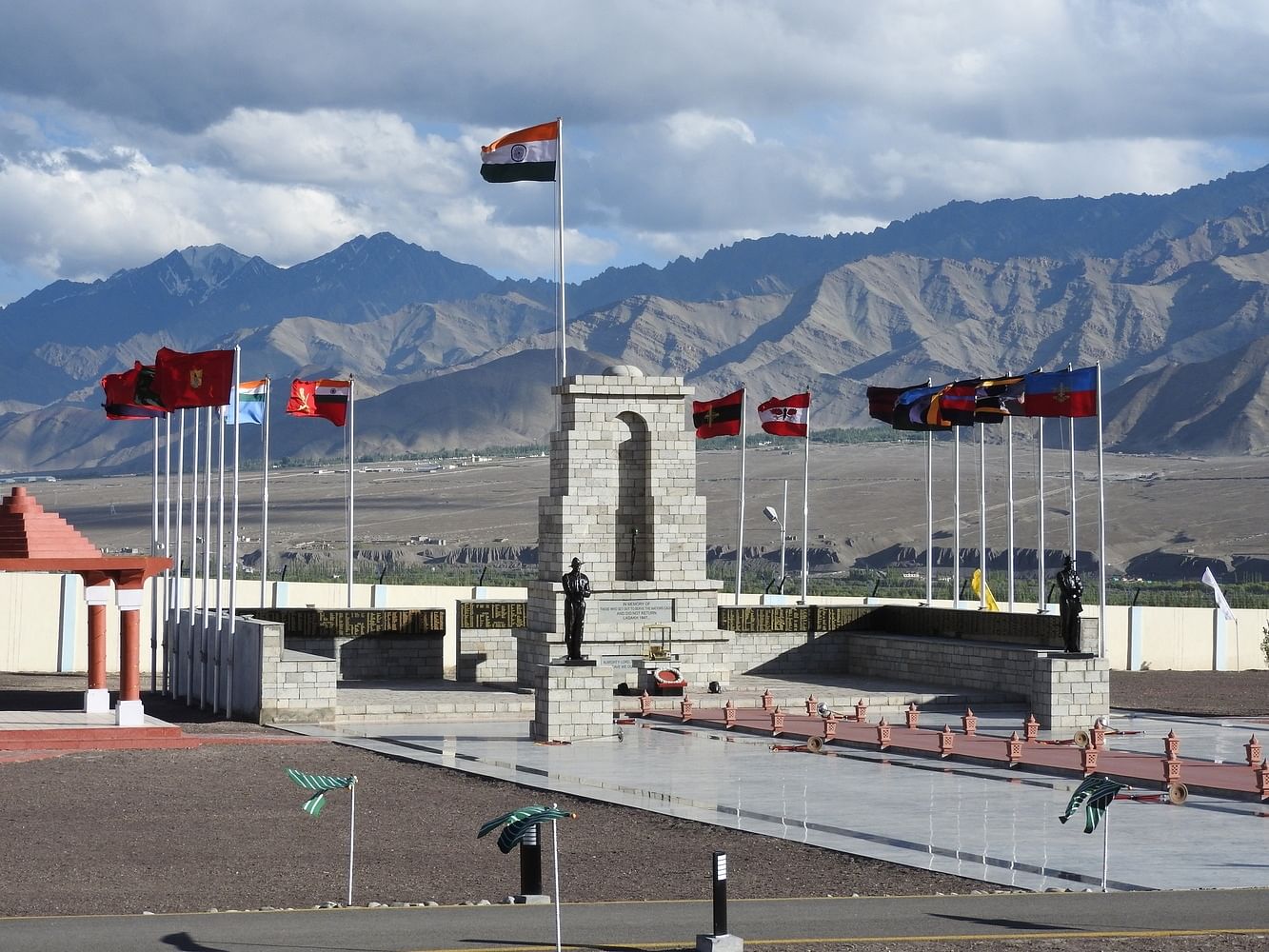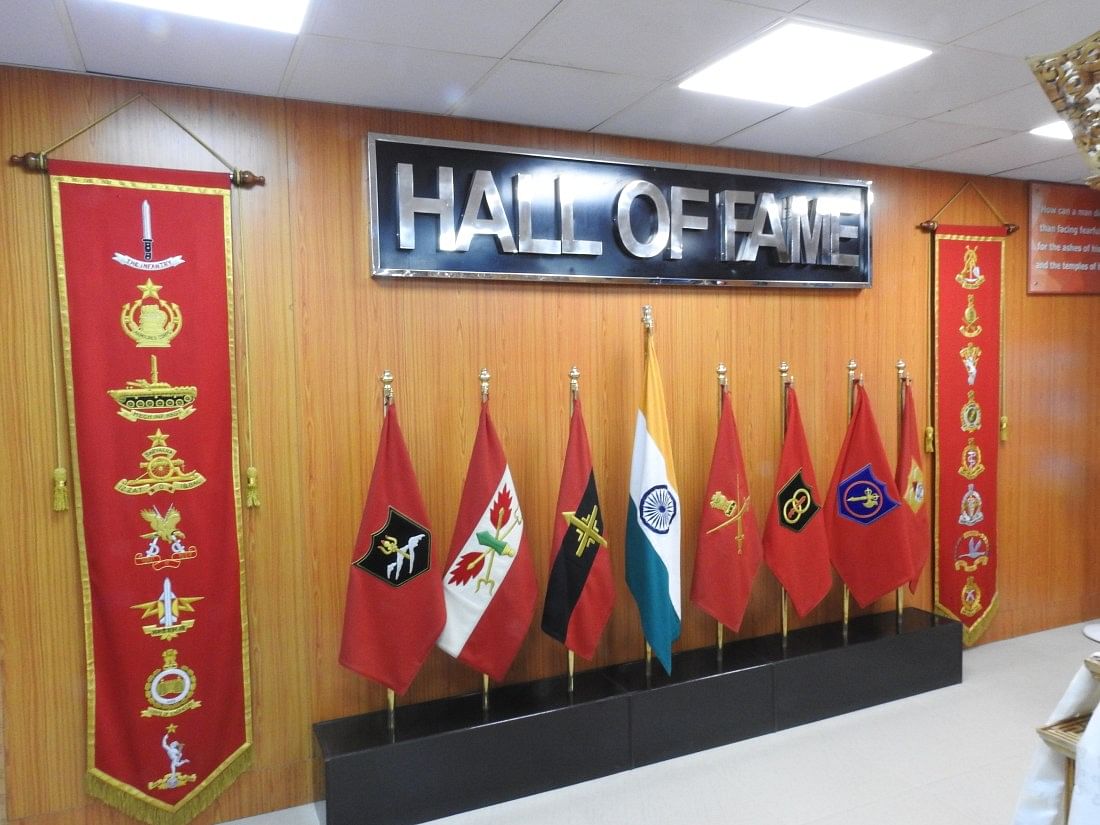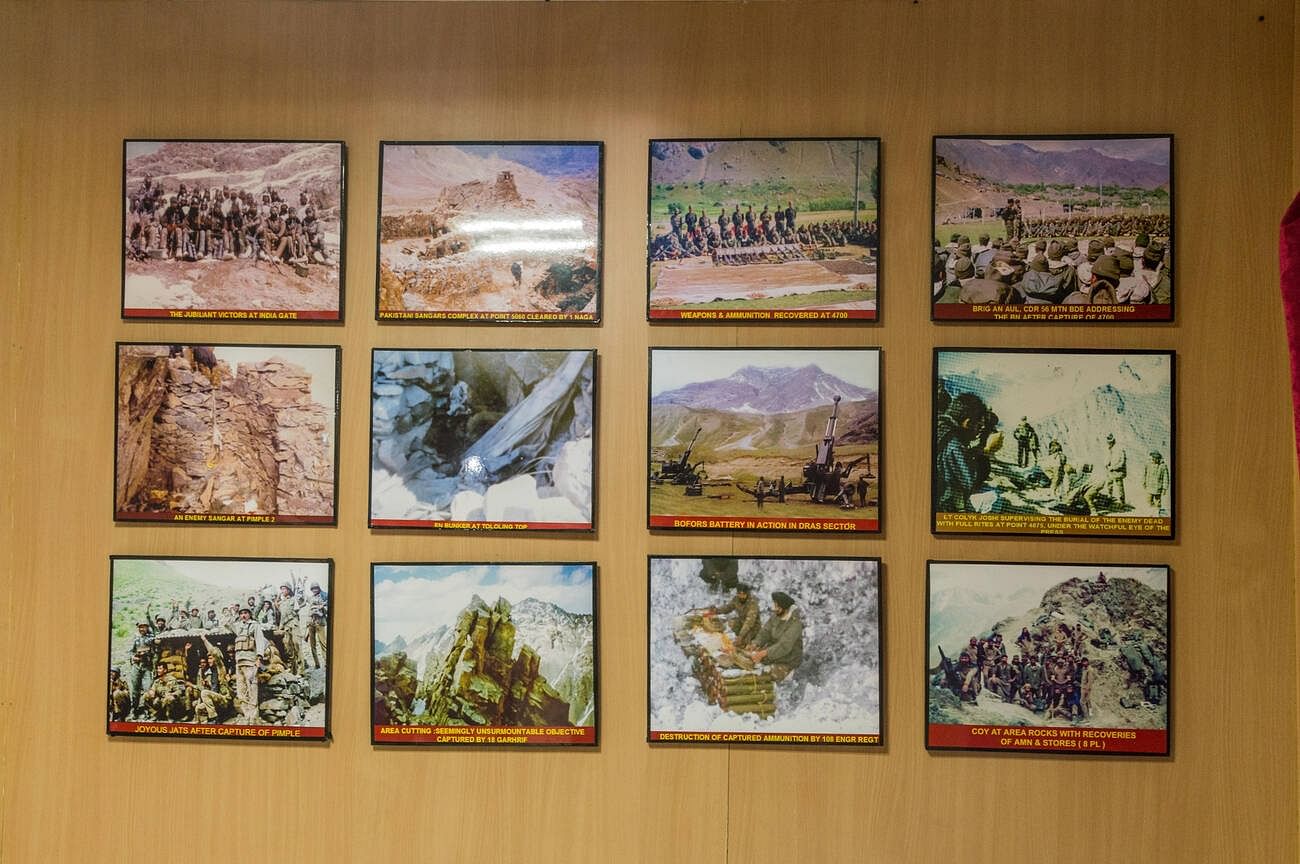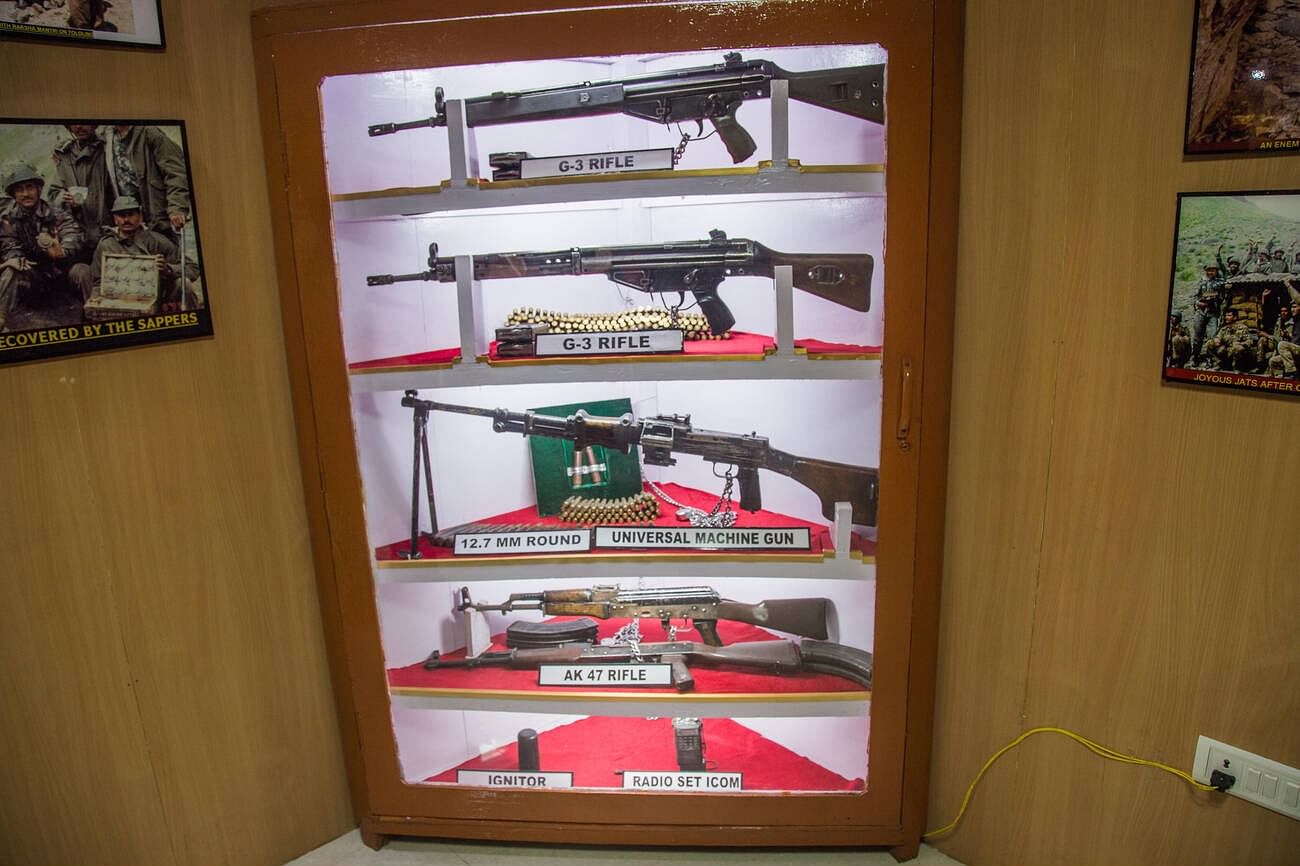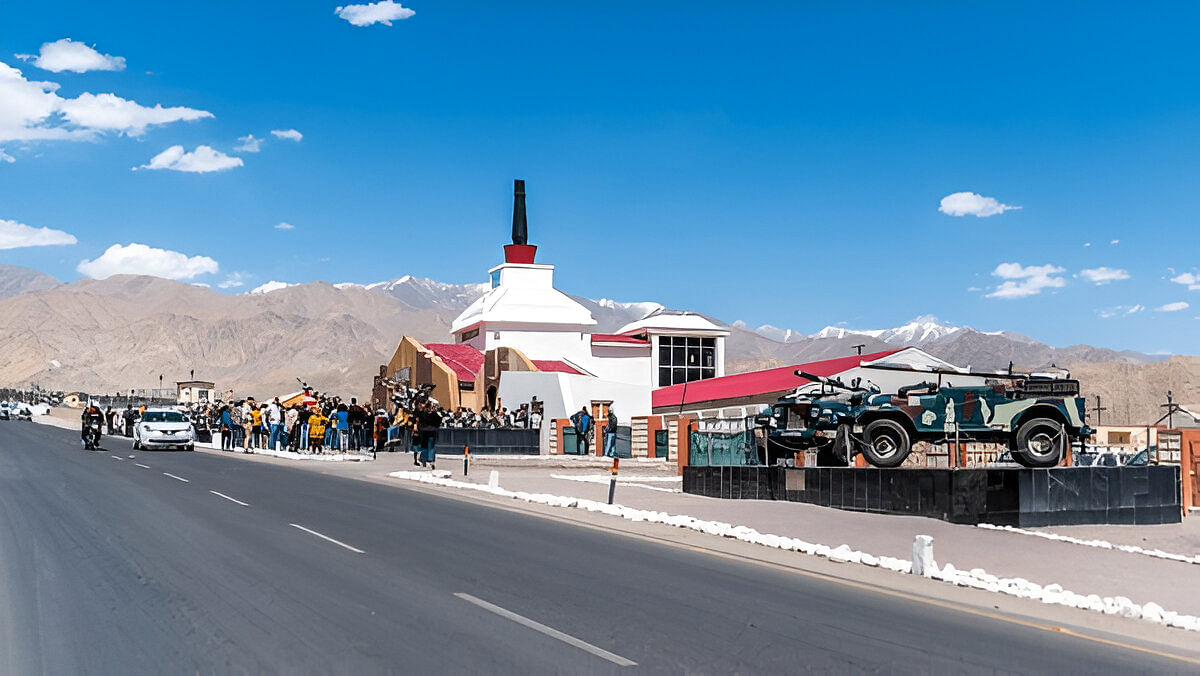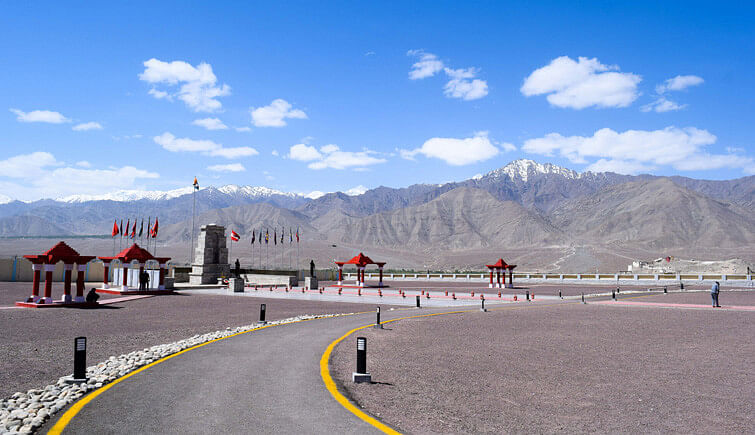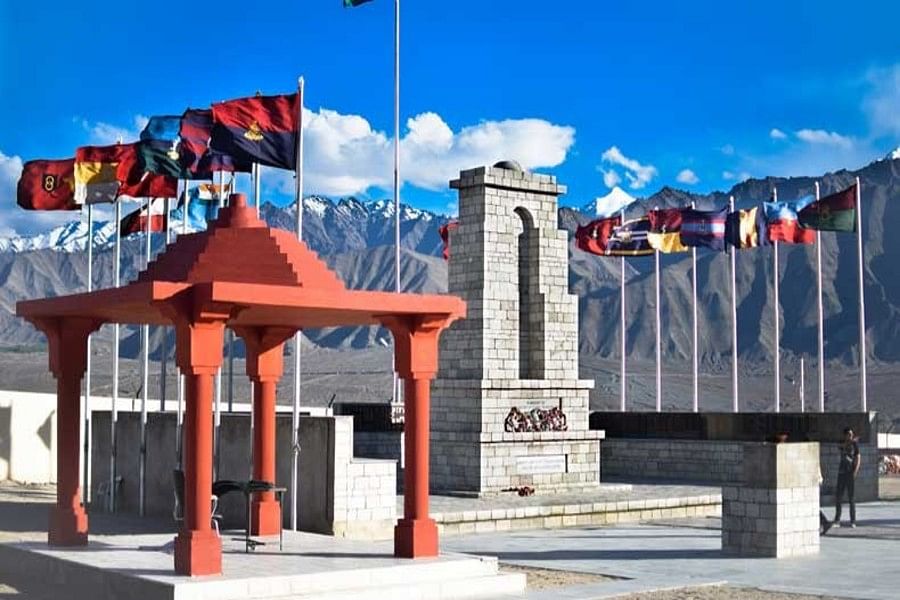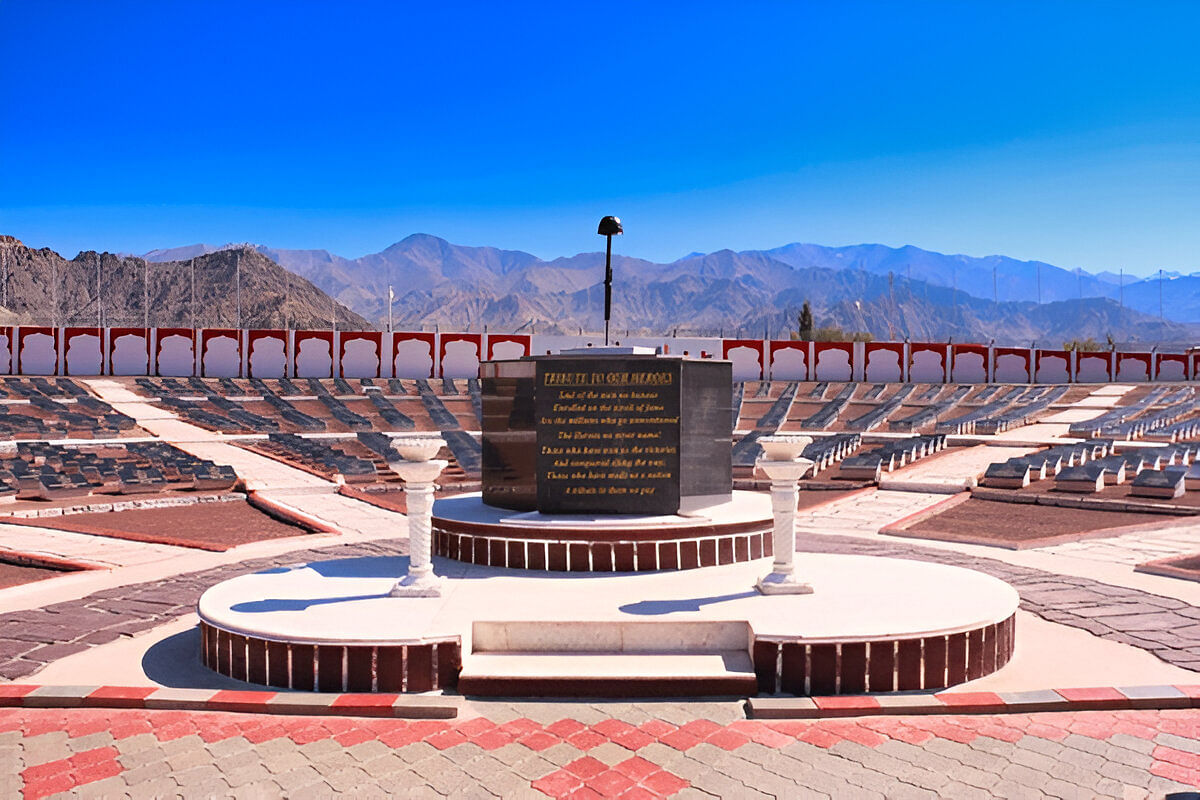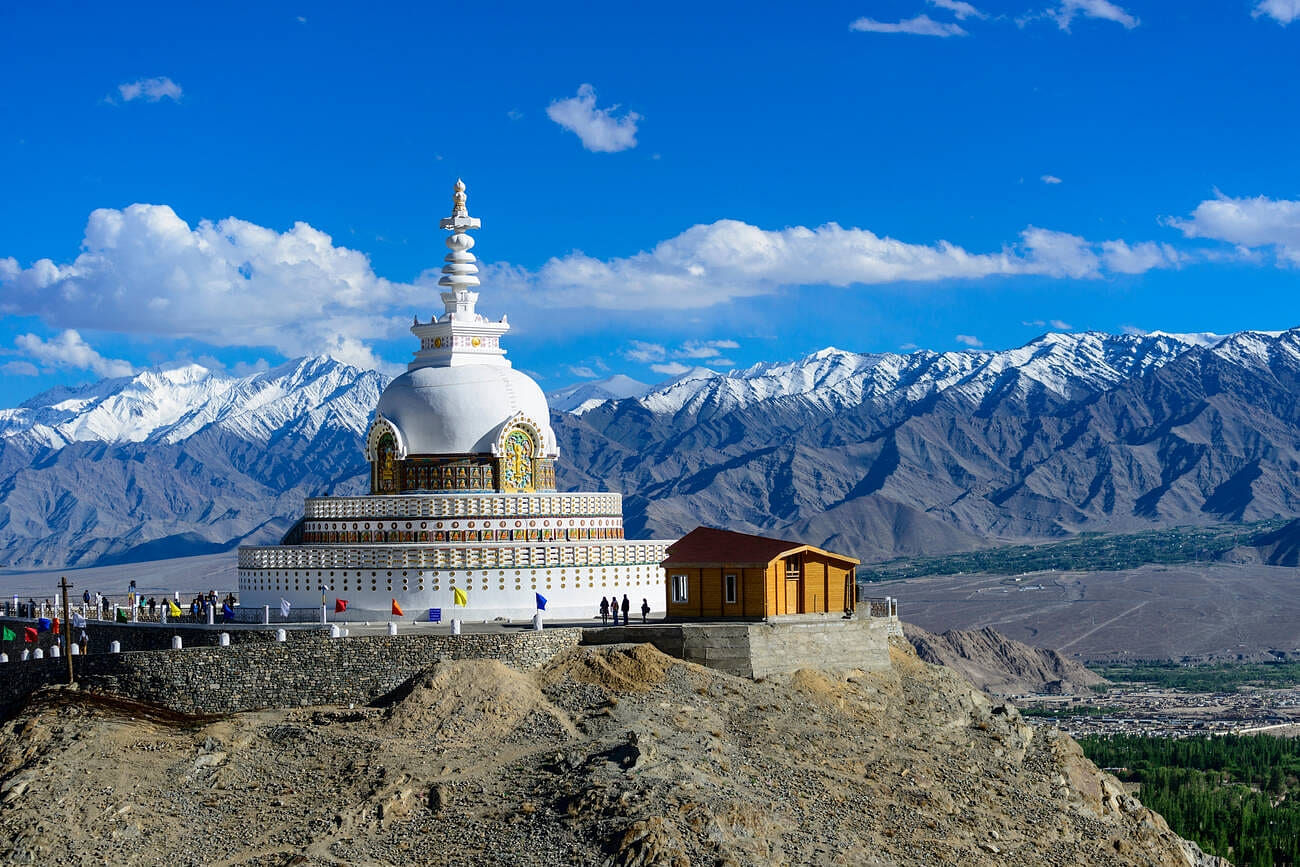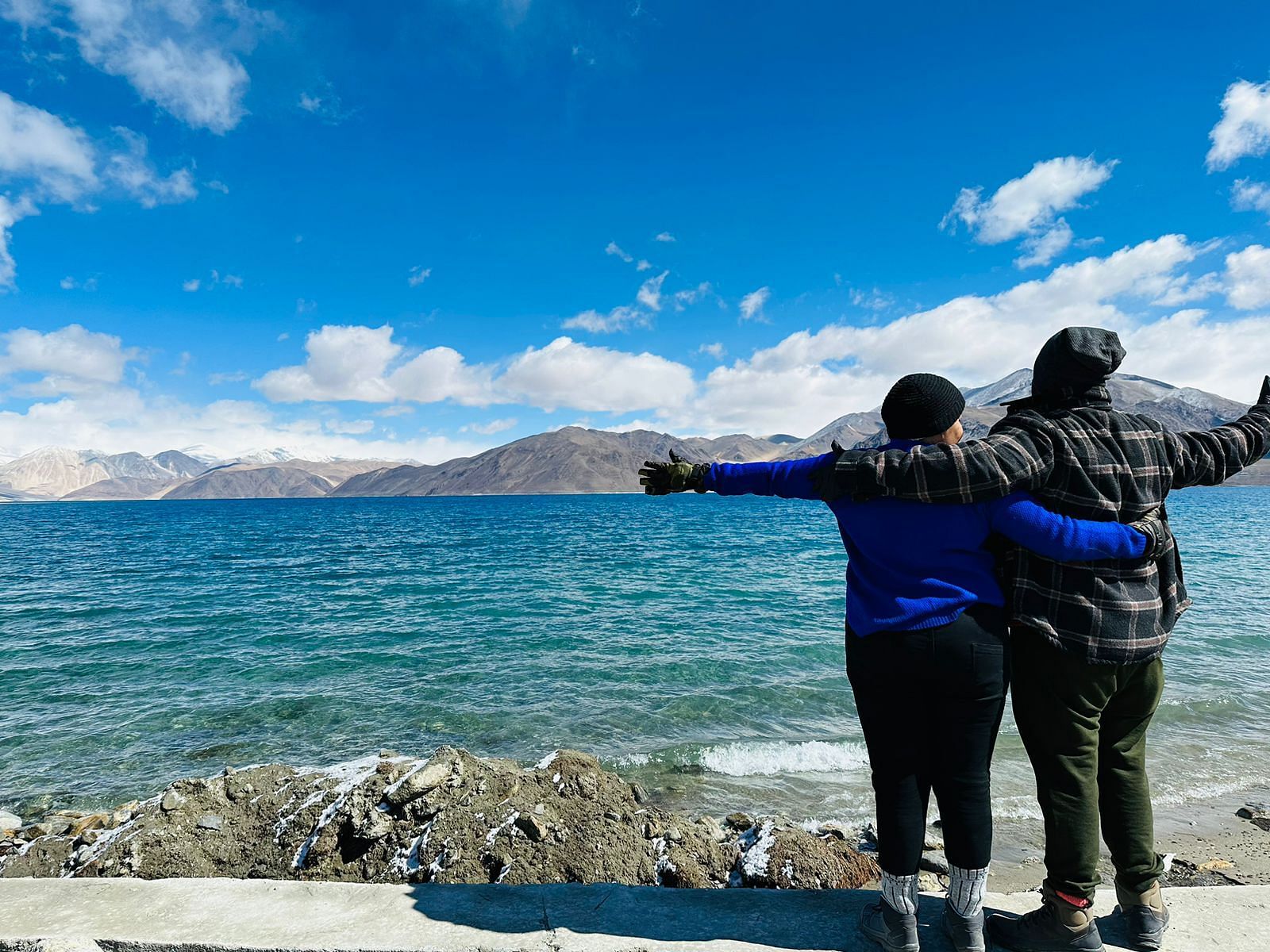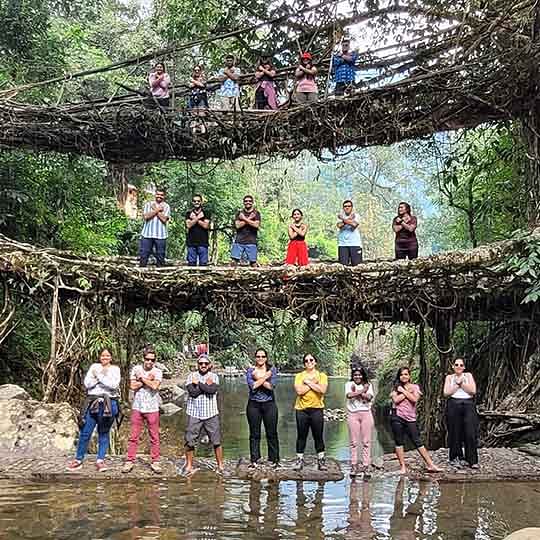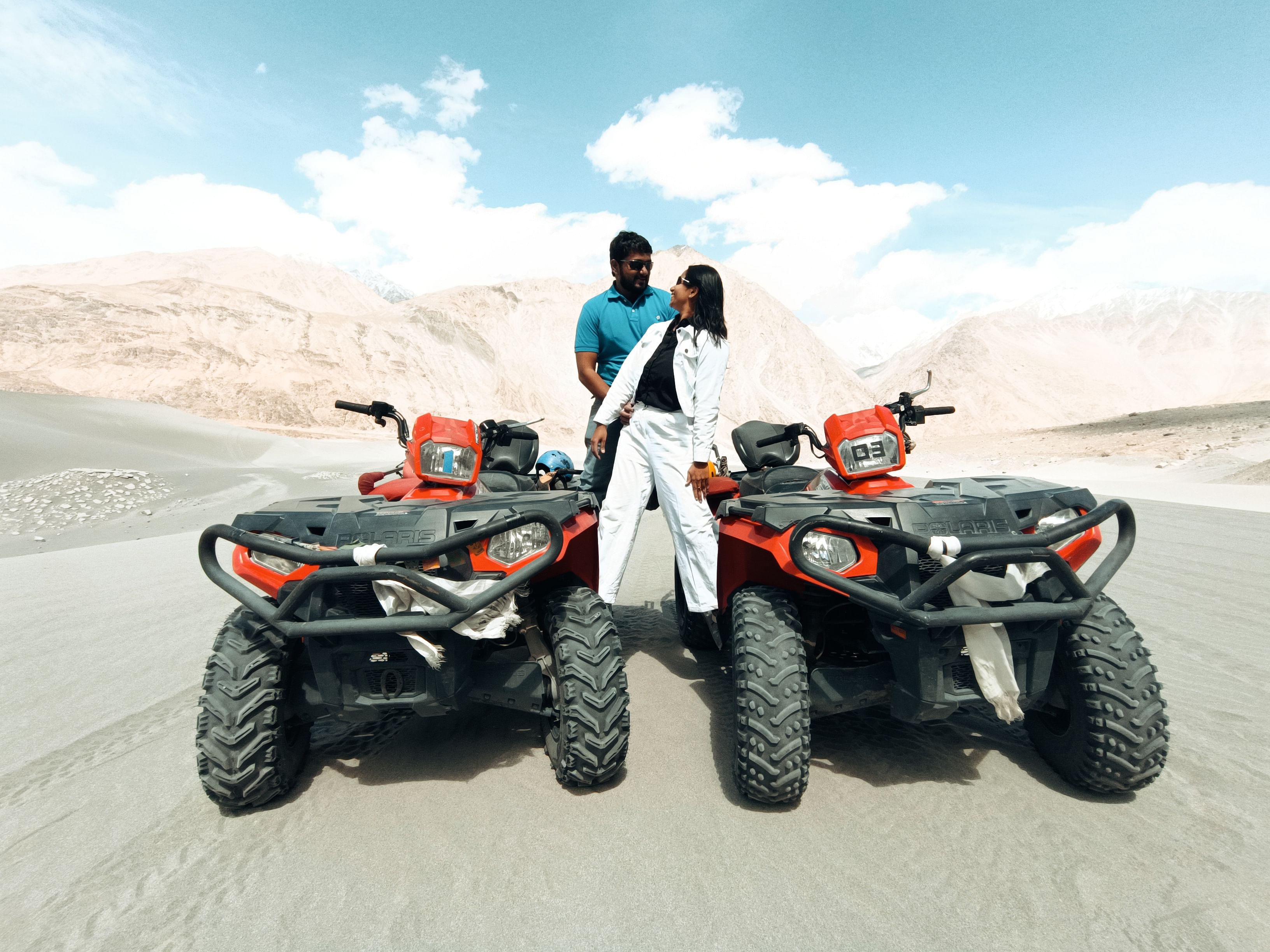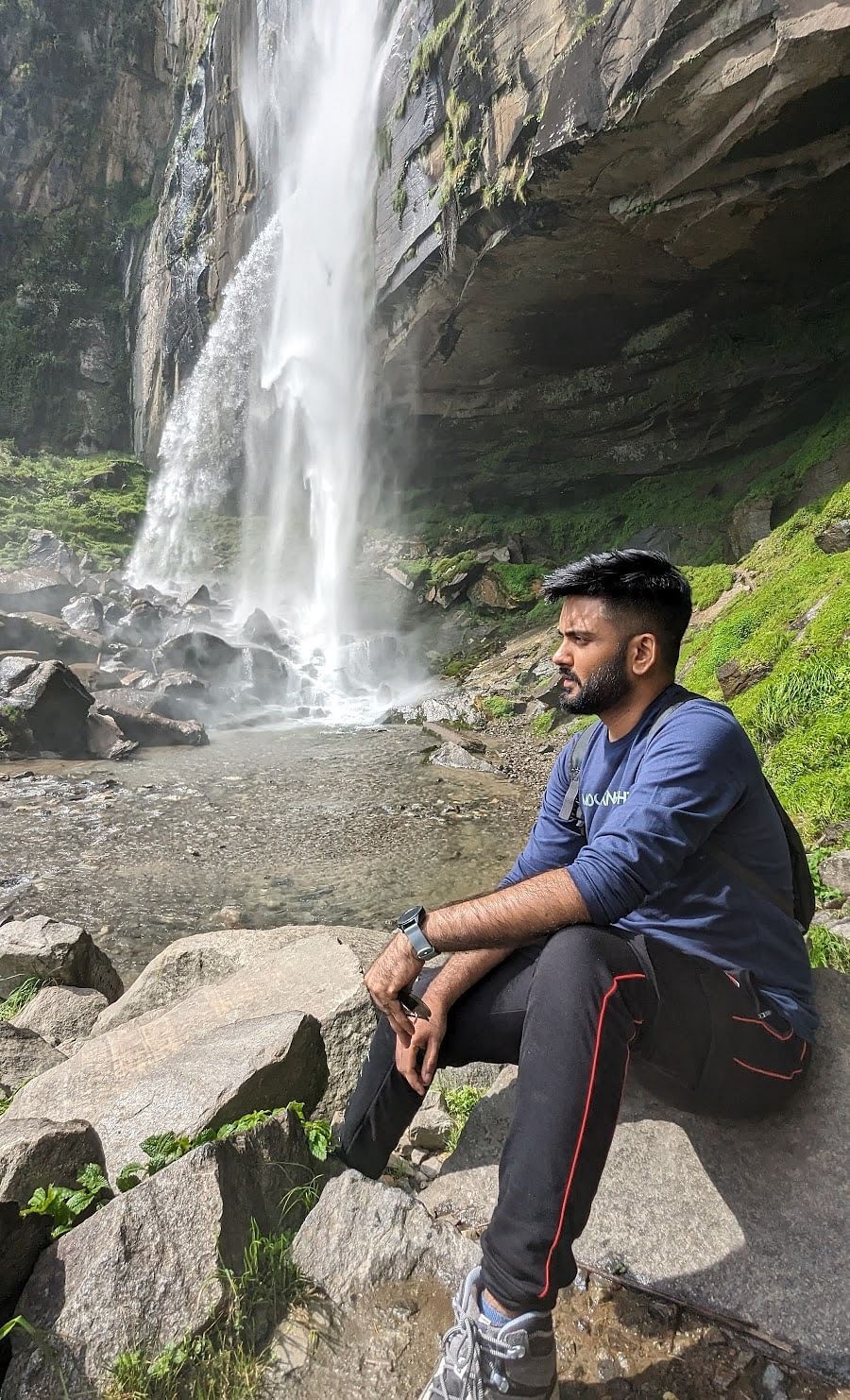When you think of Ladakh, your mind probably jumps to snow-capped peaks, winding bike trails, and monasteries.But tucked away just a few kilometers from Leh town is a place that hits differently. The Hall of Fame! Yes, it has taken a lot of fame in most of the Ladakh trip packages!
Located just 4 km from the city of Leh, along the Leh-Kargil Road and close to the Leh Airfield, the Hall of Fame Museum is constructed and maintained by the Indian Army. This museum stands as a solemn tribute to the brave Indian soldiers who laid down their lives during the Indo-Pak wars. It’s not just a museum—it’s a reminder of the real-life battles fought in the extreme terrains of the region, particularly along the Line of Control in places like Kargil, Siachen, and Drass.
Whether you're a history enthusiast, a traveler curious about Ladakh's strategic significance, or simply someone who wants to understand the region beyond its stunning landscapes, the Hall of Fame offers a well-rounded perspective through artifacts, personal stories, wartime gear, and multimedia exhibits. Even if you're on a Ladakh bike trip, don’t forget to stop here!
About the Hall of Fame Museum
The Hall of Fame Museum in Leh is a special place built by the Indian Army’s 14 Corps in 1986. It honors brave Indian soldiers, especially those who lost their lives in the Indo-Pak wars, including the Kargil War. The museum helps people understand the tough life of soldiers who serve in high-altitude areas like the Siachen Glacier, where it can get as cold as -60°C!
It’s not just a museum—it’s a place that inspires pride and respect for our army. Whether you're a tourist or a patriot, this museum will leave you with strong feelings.
Things to See Inside Hall of Fame
The Hall of Fame Leh is not your regular museum. It’s an emotional, eye-opening tribute that takes you straight into the heart of India’s military pride and Ladakh’s raw beauty.
It may look like just two floors, but those two floors are enough to make you truly appreciate what our jawans do for us! So, what’s inside? A lot more than you'd expect.
The museum is typically divided into two floors, each with several sections:
1. Ladakh Culture and History Gallery: Ever wondered what life in Ladakh is really like beyond the stunning landscapes? This section is like opening a window into the soul of Ladakh. You’ll find everything from traditional Ladakhi clothes, handmade crafts, and musical instruments, to little nuggets about the festivals, daily routines, and unique lifestyle of the locals.
It’s not just about pretty displays — it helps you understand the region where the Indian Army lives and works. Knowing the culture adds a whole new layer of meaning to everything you see next.
2. Siachen Glacier Display: This is a powerful section that showcases the extreme conditions faced by soldiers deployed in the Siachen Glacier, the world's highest and coldest battlefield. You'll see:
- Specialized clothing and equipment: Learn about the multi-layered clothing, specialized boots, survival gear, and other innovative tools designed to withstand temperatures as low as -50°C.
- Recreation of a soldier's living quarters: Get a tangible sense of what it's like to live and serve in such harsh, isolated environments.
- Photographs and details: Pictures of army posts on the glacier, training processes on ice walls, and general life in Siachen.
Souvenir Shop: Before exiting, there's a shop where you can purchase memorabilia like Indian Army T-shirts, caps, badges, keychains, books on military history, and local Ladakhi handicrafts.
Photo Booth: You might find a photo booth where you can dress up in traditional Ladakhi attire for a fun photo session (for an additional fee).
Suggested Read: 51+ Best Places to Visit in Ladakh: A Complete Travel Guide
1. OP Vijay Gallery (Kargil War Display): This section hits you hard. It's all about the 1999 Kargil War – Operation Vijay. You'll find:
- Weapons and Ammunition: Displays of various weapons and artillery used by the Indian Army during the Kargil War, as well as those captured from Pakistani forces.
- War Documents and Photographs: Authentic documents, maps, and compelling photographs from the battlefield that provide a vivid account of the war's progression and the challenges faced.
- 3D Models: Look for 3D models of strategic locations like "Blow-up of Tiger Hill," "Blow-up of Tololing," and "Blow-up of Point 4875," which help visualize the difficult terrain and battle strategies.
2. Martyrs’ Gallery: Okay, this is the part that really hits you in the feels. The Martyrs’ Gallery is all about the brave hearts who gave up everything for the country.
You’ll see a wall filled with photos and short stories of soldiers from different wars. It’s like walking through a hall of heroes.
There are personal items and letters too like stuff they actually used or wrote. One of the most touching is “The Last Post,” a letter written by Captain Vijyant Thapar to his parents before he laid down his life. Total goosebumps moment.
3. Projection Room: Pop into this room for a 30-minute documentary on the Kargil War (Operation Vijay). It’s full of real footage, stories, and gives you a front-row seat to what actually happened.
4. Awards and Honors: Don’t miss the display of medals and awards given to these real-life superheroes. It’s a proud reminder of the courage that protects us every day.
- War Memorial / Shaurya Sthal
This open-air memorial features a wall with the names of brave martyrs who laid down their lives for the nation. It’s a quiet, emotional space that invites you to pause and reflect.
At the entrance, there’s a serene statue of Lord Buddha with a message of peace. It offers a calming contrast to the intense war stories inside.
- Military Hardware Displays
In the outdoor area, you’ll see real military equipment on display from artillery guns and army vehicles to sometimes even a captured tank. It gives you a close-up look at the might of the Indian Army.
Check These Out: 7 Days Luxury Holiday in Ladakh with Nubra Valley & Pangong Lake
What is the Best Time to Visit the Hall of Fame?
The best time to visit the Hall of Fame Leh is during the summer months from May to September. This is when Ladakh’s roads are open, weather is pleasant, and skies are crystal clear, offering a perfect backdrop for sightseeing and photography.
While the museum remains open throughout the year, visiting during winter can be challenging due to heavy snowfall, extreme cold (dropping to -20°C), and limited accessibility. However, it can still be a unique and quiet experience if you're already in Leh during off-season.
How to Reach the Hall of Fame in Leh Ladakh?
Location
Situated approximately 4 kilometers from Leh city center, the Hall of Fame is located on the Leh-Kargil Road, near the Leh Airfield.
By Air:
- The nearest airport is Kushok Bakula Rimpochee Airport, located about 2.1 kilometers from the museum.
- From the airport, visitors can hire taxis or use local transport to reach the museum.
By Road:
- Taxi: Taxis are readily available from Leh city and the airport. The fare typically ranges between ₹200 to ₹300 for a one-way trip.
- Self-Drive: Visitors can drive on the Leh-Kargil Road towards Spituk. The museum is easily accessible from this route.
- Public Transport: Local buses or shared taxis heading towards Spituk or Kargil can drop passengers near the museum.
Hall of Fame Timings and Entry Fees
Timings:
- Morning: 9:00 AM – 1:00 PM
- Afternoon: 2:00 PM – 7:00 PM
- Closed on Mondays for maintenance
- Light & Sound Show: 8:00 PM – 8:45 PM (timing may vary)
Entry Fee:
- Museum Visit (Indian citizens): ₹125 (older sources mention ₹25–₹50)
- Foreign Tourists: Usually ₹125 (some sources mention ₹50)
- Photography inside museum: ₹50
- Light & Sound Show: ₹125
- Combo Ticket (Museum + Show): ₹250
Suggested Read: Nubra Valley Travel Guide: Popular Spots, Activities, and More
Places to Visit Near the Hall of Fame in Leh Ladakh
One place isn’t enough to spend your whole day! Here’s a list of places to visit near the Hall of Fame in Leh, perfect for travelers looking to explore more around this patriotic landmark.
1. Shanti Stupa
Distance: ~5.5 km from Hall of Fame
A beautiful white-domed stupa offering panoramic views of Leh city. It’s peaceful, scenic, and perfect for catching a sunrise or sunset.
2. Leh Palace
Distance: ~4.5 km
A 17th-century royal palace with Tibetan-style architecture. Explore its ancient rooms, balconies, and enjoy a top view of Leh.
3. Magnetic Hill
Distance: ~25 km
An optical illusion that makes your car appear to roll uphill on its own! A must-stop spot for most Ladakh bike trip stories.
4. Spituk Monastery
Distance: ~8 km
Located on a hilltop, this monastery offers a spiritual vibe and stunning views of the Indus River.
5. Zorawar Fort
Distance: ~5 km
A lesser-known but historically rich site linked to General Zorawar Singh, known for his military expeditions in Ladakh and beyond.
6. Sankar Gompa
Distance: ~6 km
A quiet Buddhist monastery with lovely wall paintings and statues—a peaceful stop on your Leh trail.
7. Leh Market
Distance: ~4 km
After your museum visit, shop for souvenirs, Tibetan jewelry, pashmina shawls, and enjoy some local momos! Leh Market is the best place to end your day with great shopping and tasty food!
The Hall of Fame Leh is where history and heroism come alive! This museum isn’t just about dusty old relics—it’s a cool mix of Ladakh’s culture and the incredible stories of our brave soldiers. The history of Hall of Fame Museum itself is fascinating, built to honor those who protect these tough mountain terrains. From jaw-dropping war displays to vibrant local traditions, there’s something for everyone. Whether you’re a history buff or just curious, this place gives you a real feel of the courage and spirit that define Ladakh and its defenders. Definitely a must-see!




